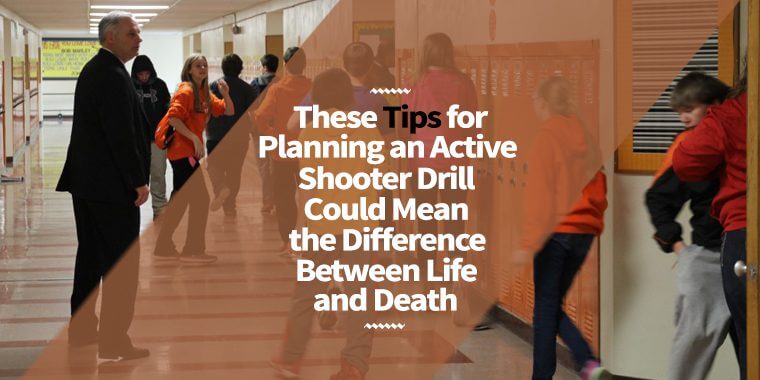These Tips for Planning an Active Shooter Drill Could Mean the Difference Between Life and Death

With the number of active shooter incidents increasingly each year, having an active shooter drill is crucial for any company. When it comes to planning an active shooter drill, there is a particular process that should be followed to ensure the smooth planning of an active shooter drill. The five steps to planning an active shooter drill are as follows:
Select the Committee
Make sure you pick people who have the proper qualifications and connections to be on the committee. Let other participants attend the first meeting to offer their expertise in the planning phase. Everyone should be present on the day of the drill. Pick two people designated to take notes and record all the conversations and decisions made, don’t use a member of the development team for this.
Develop the Drill
Prepare job action sheets for each participant in the event, so that they all have a clear understanding of what will take place. Decide what your guidelines and rules will be. For example, some active shooter drills allow photos to be taken, and some don’t. You also need to decide if you will allow participants of your drill back into the building once the drill is over, and develop a policy towards late members as well. Build your agenda. A good active shooter drill usually includes not only multiple simulations but panel discussions and educational seminars as well. Speakers on the panel can include people like security experts and law enforcement.
Choose a Venue
The place for your active shooter drill should be the right size to accommodate whatever kind of event you are planning. Make sure amenities like clean bathrooms, trash bins, and other necessities are provided. Have a Plan B available in case your original venue isn’t available. Advertise your event and provide details on what will be happening during the drill. Make sure adequate parking is available and that all of your video and audio equipment is working properly. Execute a walk through the day before your event takes place to ensure everything is ready to go.
Execute the Drill
On the day of the drill, all of the staff should arrive at least 2 hours early. Provide a site map and cell phone list to organizers and make sure water and snacks are available for everyone. Pick two leaders to take care of any problems and have each group signify to you that they are ready to start. Make sure participants have the option to leave the drill before it begins, and have law enforcement test fire a round so that nobody knows what the shooter looks like when the drill starts. Have everyone at the event sign a release form and make sure you have safety officers stationed around the exits to prevent anyone from leaving once the drill starts.
Analyze the Results
When the drill is complete, go over the results and learn what you can from asking the participants, relevant and exciting questions. Discuss with participants who escaped and what they felt once they escaped. Many people want to go back in and help others, while many people are shot trying to help wounded when the shooter returns to the area. Attempts to attack the shooter are largely unsuccessful as well.
Active shooter drills can have many different aspects to them. There is a lot more to planning one than just planning a live simulation. Other things like legal waiver and logistical issues have to be handled too before a drill can take place. These five tips will help make sure your active shooter drill is properly planned and executed.
Be Prepared
In recent years it has become imperative to have an emergency evacuation plan and the proper tools at your disposal. Adding an Evacuation Slyde to your safety equipment and procedures will increase your ability to handle various situations. Especially in large crowds, situations can become instantly chaotic and disrupt potential rescue efforts.
The traditional sleds that are currently being used are difficult to maneuver and can take a long period of time to remove the injured from the situation. The Evacuation Slyde has been designed so that a single person can carry multiple sleds into an emergency situation and remove numerous injured regardless of their stature.
